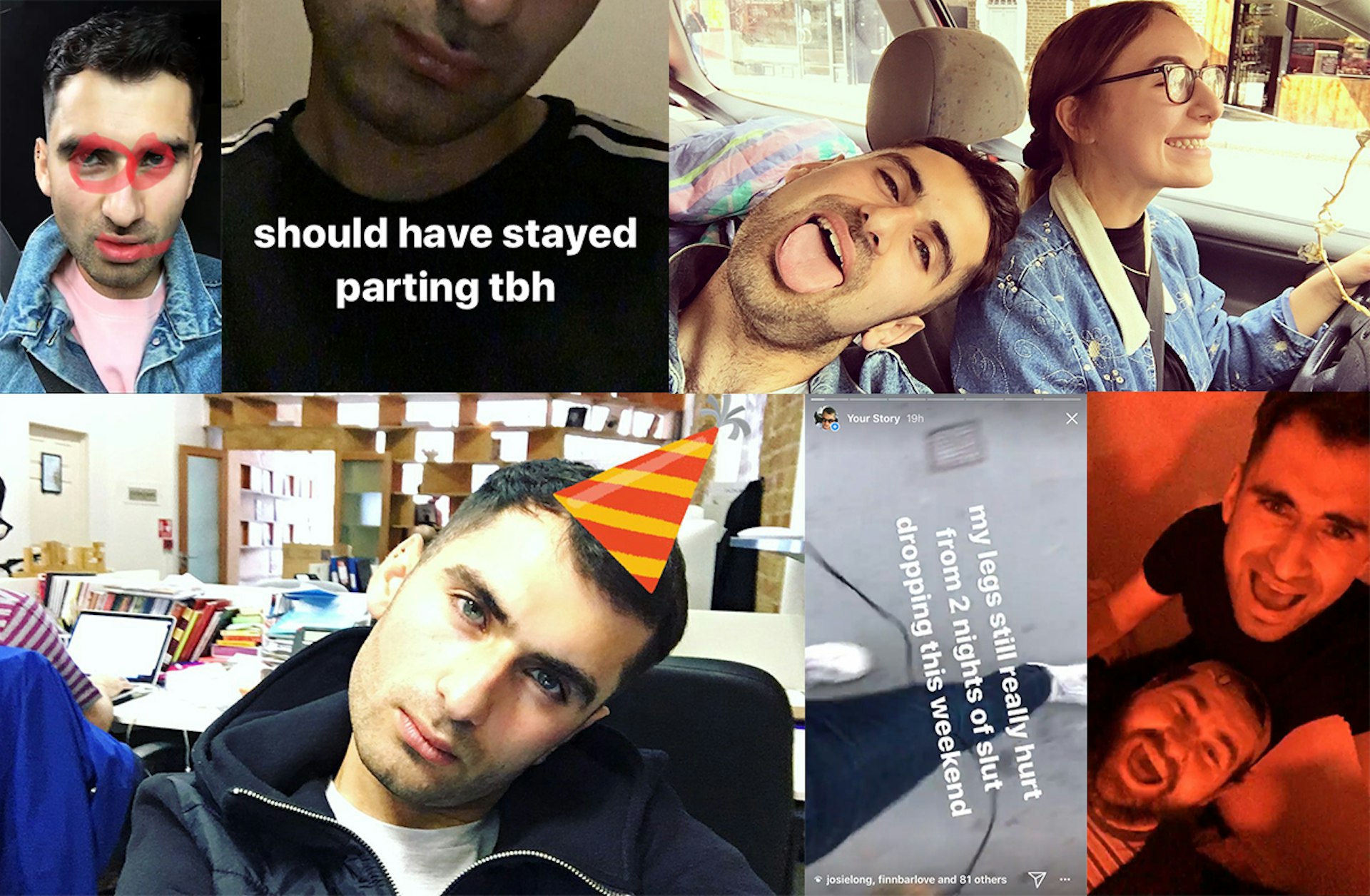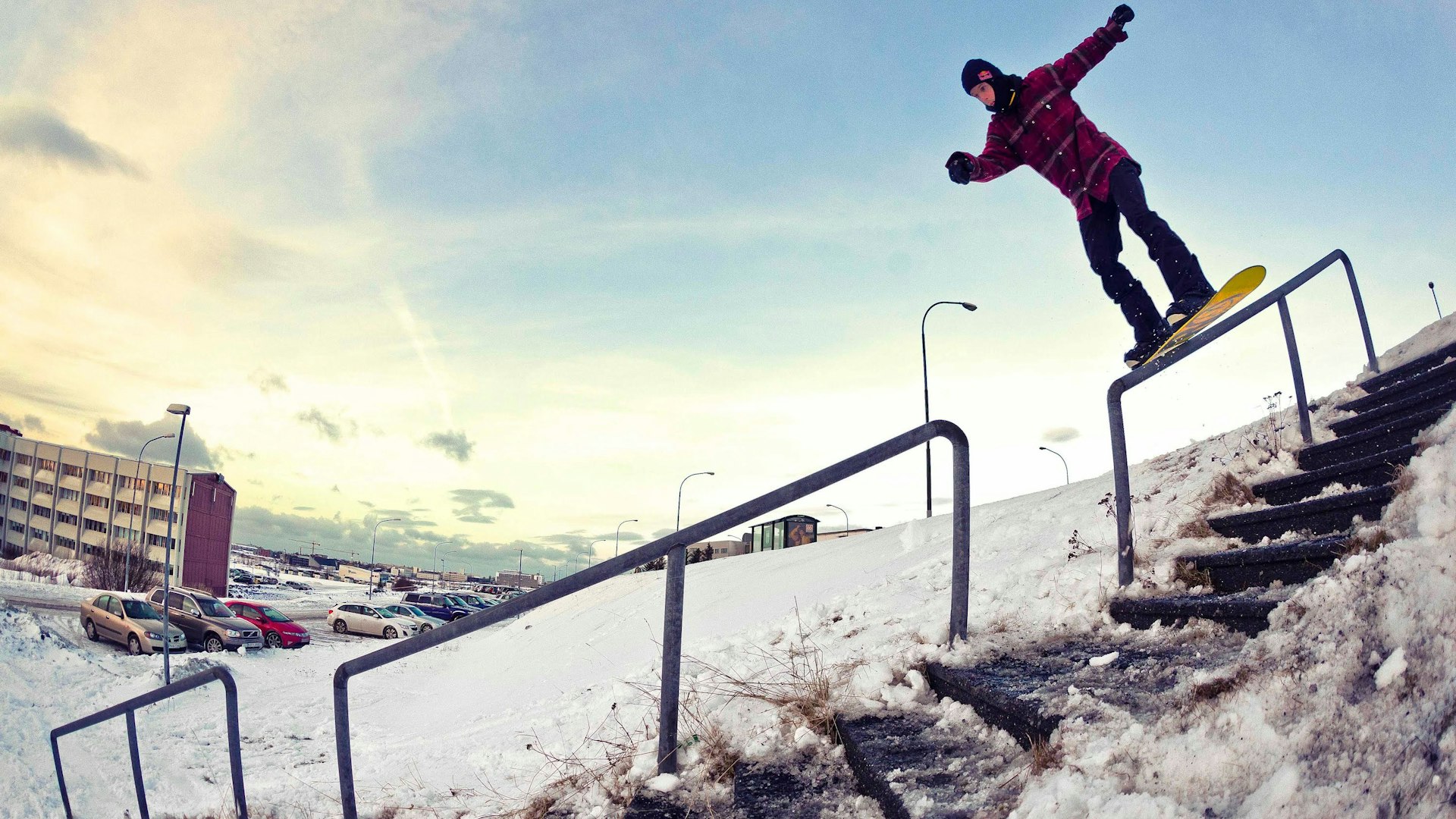
How Instagram stories became a lifeline for my mental health
- Text by Michael Segalov
I was in the car back from Bestival this year when I created my first Instagram story, feeling miserable after what was a pretty heavy night out just hours before. Driving me home was a friend with whom I’d descended on the festival for one night only, a work trip that ended with us dancing to Charlotte Church singing a set of covers in a massive tent circa 4am.
I picked up my iPhone and filmed us driving, taking care (of course) to capture whatever might be my best side at that moment in time. I asked her stupid questions on camera. I talked about our journey and about the progress we were making. I’m not entirely sure, even now, who I thought I was speaking to. I didn’t think much of it all really, just a way to pass the time. She dropped me off. I had a bath. I tried to eat.
In my bed, a few hours later, I felt indescribably alone. With the lights off, the silence hit me. Isolation and despair consumed every corner of my mind.
I knew my housemates were just outside my door, that my friends would pick up the phone or be with me if I just reached out and said I needed some care. I knew that the previous night I was happy, lost in a haze of light and colour and sound. I knew there were some self-inflicted reasons too for the sadness that was slowly descending around me: depleted serotonin levels, a lack of sleep and a pounding headache. I also knew that, at some point soon, I’d feel better, that I was battling a load of chemical reactions in my head. I knew all this, but it didn’t matter.
The thing is, the last few months for me have been a struggle. A month back I lost my grandpa, a man who my family and I were indescribably close to. I was stood by his side as he passed away from us. I still don’t think I’ve quite digested what seeing the life leave a body of someone who had such a profound impact on me quite means.
I’ve also found myself processing the breakdown of various friendships, and I’m still unpacking what went wrong. I’m 24 now, and like most of us I’ve not really got a clue what I’m doing most of the time. The onset of winter is always a fucking nightmare anyway, the looming darkness and the shitty weather creates a self-fulfilling fallacy from which I can’t escape. None of this is abnormal, but that doesn’t make it easier to swallow. It doesn’t make things feel any more under control.
And so there I was, tears slowly dropping into my pillow, all of these thoughts running unstoppably through my head.
Feeling paralysed in my loneliness I picked up my phone. I considered texting that someone, then I didn’t bother. I checked my social media feeds and looked at news sites. Unsurprisingly, nothing helped. I opened up my Instagram app and looked back at the short bursts of footage I’d created just hours before, thinking I’d want to delete them. Instead I stared at myself looking happy and excited and full of life. I saw myself surrounded by colours and friends and bright lights. I saw my friend laughing at stupid jokes and enjoying my company and being pleased I was with her. I watched the story back 10, maybe 15 times, over and over. I started to smile.
I found myself feeling slightly better, reminded that just hours before everything had seemed okay. I recognised the movements and the gestures and the voices. This wasn’t a distant memory but me – the person I still am today. I fell asleep.
In the weeks since that night I’ve been doing better. I’m still processing and hurting and navigating this next chapter, but I’m being kinder to myself, kinder to my body, kinder to my head. I’m not really sure still where exactly my mental health is. It’s hard to quantify really, maybe it has never been that bad. A deep sense of sadness still often feels all encompassing, but slowly – by keeping busy, keeping focussed – the low ebbs are becoming increasingly short and under control.
What hasn’t changed, though, is my Instagram storying. In fact, if anything I’ve been documenting fleeting moments of my mundane daily life more and more. I’m not shooting filtered perfection, not my #perfectbody or beautiful vegan dinners – just me, surrounded by loved ones – being silly and ridiculous and messing around. I’m not even uploading pictures to Instagram properly, just the stupid stories that exist for 24 hours and no more.
I film myself surprising my mates with stupid ‘would you rather’ scenario questions. I film myself dancing and walking with my tongue stuck out through the park. I document the drunkenness and the sobriety, I write stupid captions and I draw little illustrations on the side.
Hours, sometimes just minutes later, I sit in the bath, lie in bed, perch outside my office on the steps and watch them back. I see my face looking back at me. I hear my voice speaking clearly. I’m reminded that I’m a person just like everyone else. It sounds stupid, I know, but just listening to my own voice and watching my own face expressing emotions seems to pull me back up. It’s recognition, it’s comforting. When you can’t always tell exactly how you’re feeling in any given moment, when waves of sadness hit and suffocate you, sometimes that is all you need. It’s probably also a little bit of vanity, but let’s not dwell on that.
Research has suggested that social media can be incredibly damaging to the mental health of users, a study this year put Instagram as the worst of the bunch. Experts say the social media platform is associated with high levels of anxiety, depression, bullying and FOMO, or the “fear of missing out.” It’s something I can definitely relate to. As a teenager, I had similar experiences, and have written about and have met people with direct experience of just how bad it can get.
Even now, scrolling through photos and videos in my library or Instagram feed from weeks and months past sometimes invokes nostalgia and happy memories – providing blissful reminders of how great life really is. In darker times, though, they just invoke moments of joy and pleasure that once existed, now no longer there.
To those who watch my stories at the moment it might seem like I’m a narcissist and self-indulgent, in need of constant validation from my peers. Maybe they’re right, but right now that doesn’t bother me. Finding ways to keep your head above water isn’t always easy, even harder to find a way that is free, easily accessible, and 24 hours later all you end up with is more space on your iPhone not a depleted bank balance, guilt, and pounding pains in your throat and head.
For me, though? I’ve found the humble Instagram story to be a saviour, a tool to help me manage, contextualise my emotions, and to escape. The beauty of these curated moments I make on my smartphone is their transience – a reminder that normality is beautiful and worth celebrating. A regularly updated stream that only exists for a single day encourages me to celebrate the good times, and to remember that they’ll hopefully forever be in a constant flow. It’s reminding me to enjoy and embrace every moment and the immediate memories, and not to feel sad when they fade or another takes its place. I’m learning to not taking myself and my emotions too seriously; you can’t when you share a video of yourself sweatily stumbling home from a party at 7am.
Watching these stories back also helps me, when I’m feeling sadder, reminding me that just like the good times the darker moments also aren’t permanent, that they too are temporary and will pass. Sometimes staring back at ridiculous videos of myself does nothing to help me, but sometimes it’s a simple reminder that I – just like everyone – am here. Occasionally that’s all I need.
Michael Segalov is News Editor at Huck. Follow him on Twitter.
Enjoyed this article? Like Huck on Facebook or follow us on Twitter.
